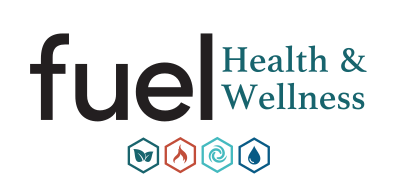Maintaining independence is a key priority for seniors as they navigate the challenges of aging. Physical therapy in Grandville provides tailored rehabilitation programs designed to improve mobility, enhance strength, and restore confidence in daily activities. Through targeted exercises and expert guidance, seniors can regain functional abilities, reduce fall risks, and improve overall well-being. Whether recovering from an injury or managing age-related conditions, physical therapy serves as a vital tool in promoting long-term independence and a higher quality of life.
Key Takeaways
- Physical therapy can significantly enhance mobility, reduce pain, and build strength for seniors, supporting their independence in daily activities.
- Various targeted exercises and techniques such as range of motion activities, strength and balance training, and manual therapies are central to effective rehabilitation.
- Skilled physical therapists in Grandville assess individual needs to design personalized treatment plans and collaborate with healthcare providers for comprehensive care.
- Selecting the right facility and consistent progress tracking are essential in achieving long-term wellness and reducing fall risks.
- Ongoing maintenance with home exercise programs and regular check-ups ensures the sustainability of health improvements.
Understand the Benefits of Physical Therapy for Seniors in Grandville
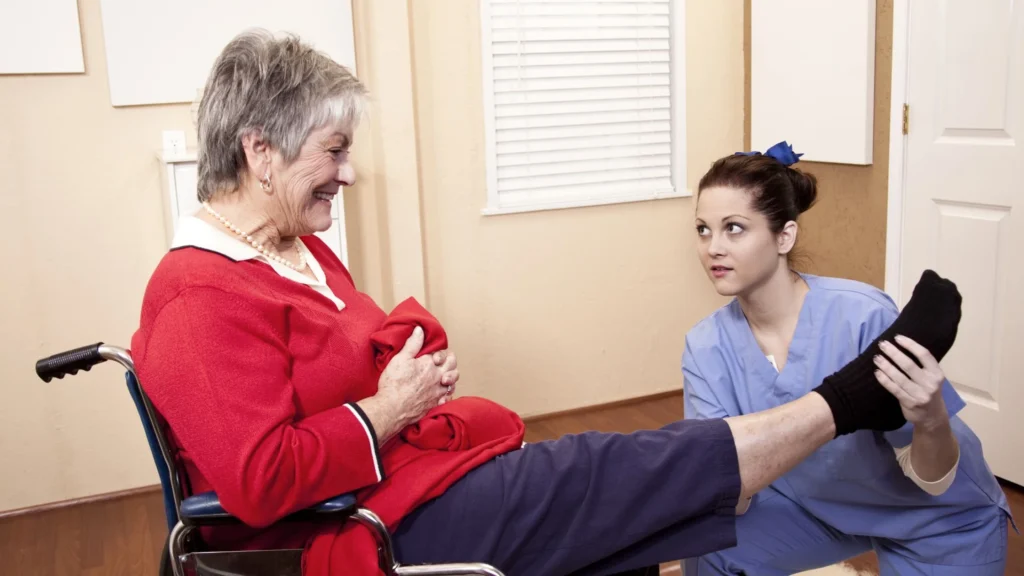
Physical therapy is a vital component of health management for seniors, especially those looking to regain or maintain independence. fuel health wellness is committed to providing a range of targeted exercises and rehabilitation techniques designed to address various concerns such as pain management, mobility improvement, and strength enhancement. For seniors in Grandville, physical therapy not only offers a practical solution to everyday challenges like back pain, balance issues, and joint stiffness, but it also supports a mental boost by fostering a sense of control and self-reliance. For additional information or guidance, please contact us.
Improve Mobility Through Targeted Exercises for Optimal Performance
A central benefit of physical therapy is the improvement in mobility through exercises specifically chosen to target restrictions commonly experienced by seniors. In a typical physical therapy Grandville session, a tailored combination of stretching, strengthening, and flexibility drills enables patients to enhance their range of motion. For instance, carefully structured exercises that focus on the legs and back can help reduce stiffness in the knee, hip, and pelvis, while exercises involving circles of the arms and shoulders promote better blood circulation and joint health. Physical therapists often incorporate protocols that gradually increase the intensity of activities, allowing seniors to safely build endurance and reduce the fear of falling—a critical factor in maintaining independence.
Equally important, improving mobility through these exercises allows seniors to perform daily activities more effectively, such as sitting down in a chair and standing up without assistance. This improvement leads to reduced dependency on mobility aids and boosts overall self-confidence. Clinical evidence supports that regular mobility exercises result in enhanced tissue elasticity, improved ligament and tendon resilience, and decreased delayed onset muscle soreness. In turn, this regular active participation in mobility exercises significantly decreases the risk of secondary injuries, allowing seniors to manage their physical condition more effectively.
Alleviate Pain With Personalized Physical Therapy Plans
Managing pain is a core component of physical therapy for seniors, and personalized treatment plans are crucial. Every individual’s pain profile is different, influenced by underlying conditions such as arthritis, back pain, or soft tissue injuries. By conducting thorough assessments, physical therapists design exercises and manual therapies that are directly tailored to target the source of pain. Techniques such as manual therapy, which involves hands-on manipulation of soft tissues and joints, work alongside strength training and stretching to relieve tension and reduce inflammation.
Personalized therapy plans also include modalities like hydrotherapy or aquatic therapy, which leverage the buoyancy and controlled resistance of water to reduce joint stress while enhancing muscle strength. This type of therapy is particularly useful for seniors experiencing pain in weight-bearing joints, such as the knees and hips. Pain alleviation through these methods not only enhances comfort but also supports improved overall function. Furthermore, by reducing pain levels, physical therapy encourages an increase in daily movement, which in turn fosters better muscle mechanics and improved blood circulation. Consequently, the integration of personalized physical therapy plans plays a pivotal role in allowing seniors to enjoy a life with less pain and more independence.
Build Strength and Stability to Support Daily Activities
Seniors benefit immensely from physical therapy programs that focus on building strength and stability. A key goal of these programs is to empower seniors to perform daily activities without relying on assistive devices. Through strength training exercises that target major muscle groups such as the quadriceps, hamstrings, and core muscles, physical therapy effectively improves muscular endurance and joint stability. This is vital for everyday tasks like climbing stairs, carrying groceries, and even maintaining proper posture.
Strength training programs are customized to each individual’s level of fitness and physical limitations. Many sessions incorporate resistance bands, light weights, and balance exercises to progressively build muscle strength. In addition, stability exercises help improve posture and coordination, reducing the risk of falls—a primary concern among seniors. Evidence indicates that consistent strength training can lead to measurable increases in muscle mass, better joint support, and enhanced ability to maintain upright positions during routine activities. By integrating strength and stability work, physical therapy not only aids in physical recovery post-surgery or injury but also acts as a preventative measure for future falls and injuries.
Foster Independence Through Customized Rehabilitation Techniques
Customized rehabilitation techniques are — perhaps more than any other aspect of physical therapy — central to empowering seniors to reclaim their independence. Physical therapists in Grandville conduct comprehensive evaluations to understand each patient’s unique physical condition, limitations, and lifestyle needs. These assessments guide the creation of a tailored rehabilitation plan that addresses specific functional deficits. For example, an individualized plan may include exercises that target fine motor skills, especially for seniors experiencing hand weakness or diminished finger coordination, which affects tasks such as buttoning a shirt or handling utensils.
Moreover, rehabilitation programs are designed to replicate real-life scenarios. They may involve functional training such as practicing movements required for safe bending, reaching, or even participating in social activities that require a degree of physical mobility. This practical approach helps ensure that improvements in the therapy room translate directly to enhanced performance in everyday life. Customized rehabilitation also extends to pain management strategies that help seniors overcome the fear of re-injury—a common psychological barrier to recovery. Overall, these personalized care plans provide the structured framework needed for seniors to rebuild the strength, coordination, and confidence necessary for independent living.
Encourage Better Balance and Coordination in Older Adults
Physical therapy offers targeted interventions to significantly improve balance and coordination, two critical factors linked to fall prevention. Balance training exercises, which may include guided movements on unstable surfaces or using balance boards, help seniors develop proprioception—the body’s ability to sense its position in space. This sensory feedback is crucial in maintaining stability while performing everyday tasks such as turning or reaching for objects.
Furthermore, coordinated exercises such as gait training ensure that every step taken is more secure and controlled. Studies have shown that tailored balance training markedly reduces fall risks in older adults, lowering the chances of fractures and head injuries.
Improved coordination also translates into better performance in dual-task activities, where the brain must manage multiple streams of information simultaneously—a common challenge as people age. For a comprehensive approach to mobility improvement, How Physical Therapists in Grandville Address Common Issues provides valuable insights into tailored rehabilitation strategies designed to enhance balance and independence.
Through continuous balance and coordination exercises, seniors experience a boosted sense of security and autonomy, which encourages further physical activity and gradual improvement in overall mobility.
Boost Confidence and Emotional Well-Being With Therapy
While physical gains are paramount, the psychological benefits of physical therapy should not be overlooked. Regular physical activity and pain reduction contribute immensely to enhancing emotional well-being. For many seniors, chronic pain and reduced mobility lead to feelings of isolation, depression, and anxiety. A structured physical therapy regimen provides a dual benefit: it not only improves physical function but also builds confidence by helping seniors see tangible improvements in their abilities.
Physical therapists also emphasize creating positive, supportive environments throughout the rehabilitation process. Such environments encourage social interaction, foster camaraderie among patients, and instill a sense of achievement after each milestone is reached. For example, group therapy sessions or community exercise classes can provide valuable opportunities for seniors to share their experiences while motivating one another. As confidence grows, many seniors are more willing to engage in other aspects of life, from social activities to volunteering, which further supports emotional health. With improved confidence and a reduction in the fear of falling, seniors are enabled to live fuller, more independent lives.
Identify Common Physical Therapy Techniques for Aging Individuals
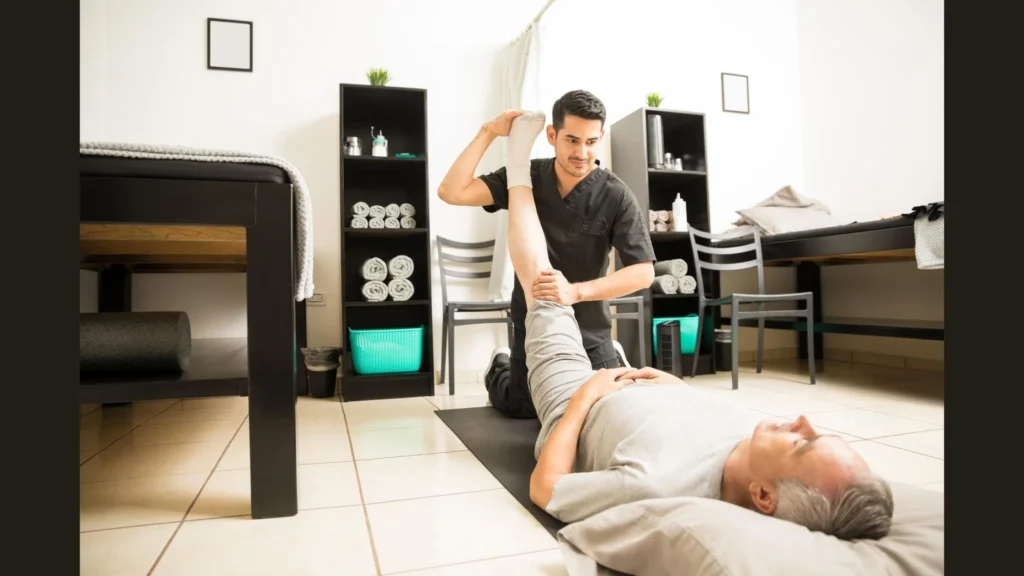
Physical therapists employ a range of innovative techniques and exercise modalities specifically tailored to address the needs of aging individuals. These methods are designed to enhance flexibility, strength, coordination, and overall physical function. With a focus on evidence-based practices, clinics in Grandville utilize techniques that have been proven to reduce pain, improve mobility, and minimize the risks associated with aging. By focusing on both the physical and psychological aspects of recovery, these techniques promote a well-rounded approach to senior care.
Discover Range of Motion Exercises to Enhance Flexibility
Range of motion exercises are an essential part of physical therapy, particularly for seniors who experience joint stiffness and decreased flexibility. These exercises involve gentle stretching and movements that help maintain and gradually improve the natural mobility of joints. By regularly performing these exercises, seniors can prevent the common issues associated with a sedentary lifestyle, such as decreased blood flow and muscle atrophy.
For example, simple exercises like shoulder rotations, ankle circles, and gentle knee bends work to reduce stiffness and promote smoother joint motion. This not only alleviates discomfort but also prepares the body for more demanding activities. Enhanced flexibility also contributes to better posture, improved balance, and reduced risk of ligament strain. Studies have suggested that a consistent range of motion routine can lead to a 20% improvement in overall joint function, making it a cornerstone technique in rehabilitation for seniors in Grandville.
Utilize Strength Training Programs Tailored for Seniors
Strength training programs are meticulously designed for older adults to safely build muscle mass and improve stability. These programs frequently include low-resistance exercises paired with progressive overload techniques that are easily modifiable based on each individual’s capabilities. Physical therapists work one-on-one with seniors, using resistance bands, light weights, and body-weight exercises to build strength in a controlled setting.
This type of training is particularly beneficial for reinforcing the muscles that support major joints, such as the knees, hips, and back. By focusing on these key areas, seniors can improve stability and reduce the risk of falls and other injuries. Moreover, enhancing muscular strength contributes to better endurance, allowing seniors to perform routine activities for longer periods without fatigue. The improvements in strength not only aid in maintaining independence but also enhance confidence and overall quality of life.
Engage in Gait Training to Improve Walking Skills
Gait training is a foundational therapy technique that focuses on improving the mechanics of walking for seniors. Using a combination of balance exercises, step analysis, and structured walking drills, physical therapists help patients achieve a more natural and safe walking pattern. This is particularly important for addressing common issues such as uneven stride length and instability, which are significant risk factors for falls.
During gait training, therapists may use tools like treadmills, parallel bars, or even specialized feedback devices to monitor improvements in stride, pace, and overall coordination. The goal is to ensure that every step taken is controlled and well-balanced, thereby reducing the chances of missteps or falls. Research suggests that targeted gait training can improve walking efficiency by up to 25%, which enhances overall mobility and independence in daily living. Through repeated practice and personalized modifications, seniors learn to regain confidence in their walking abilities, allowing them to move about their homes and communities with increased security.
Incorporate Balance Training to Minimize Fall Risks
Fall prevention is one of the most critical aspects of physical therapy for seniors. Incorporating balance training into therapy regimens helps individuals strengthen their core muscles and improve stability. Balance training exercises can include standing on one leg, using balance boards, or performing slow, deliberate weight shifts from side to side. These exercises are crucial in building the proprioceptive awareness needed to sense body position and make quick adjustments during movement.
Improved balance training reduces the likelihood of falls, which are a leading cause of injury among the elderly. Innovative clinics in Grandville integrate balance work with strength and flexibility routines to ensure a comprehensive approach. Consistent balance training can result in significant improvements in overall stability and reduce anxiety related to falling. This holistic approach not only enhances physical safety but also contributes to increased confidence in performing daily tasks.
Implement Aquatic Therapy for Safe Recovery
Aquatic therapy, or hydrotherapy, has gained popularity as a safe and effective method for senior rehabilitation. In a pool environment, water buoyancy supports body weight, reducing joint strain and allowing for a greater range of motion without pain. This makes it particularly beneficial for seniors with arthritis, back pain, or other conditions that limit movement on land. Under the guidance of a physical therapist, aquatic exercises can include gentle stretching, buoyancy-assisted strength training, and balance drills performed in water.
By reducing the load on the skeletal system, aquatic therapy enables seniors to perform movements that may be too painful on dry land. In addition to its physical benefits, working in a water-based environment can provide a soothing sensory experience that reduces stress and promotes emotional well-being. Research has indicated that aquatic therapy can improve flexibility and balance by up to 30% in older adults, making it a valuable component of a comprehensive physical therapy program for seniors.
Explore Manual Therapy to Address Joint Issues
Manual therapy is a hands-on treatment technique that involves manipulating muscles, tendons, and joints to alleviate pain and restore mobility. This approach is particularly effective for addressing joint issues, such as stiffness or inflammation, that often afflict aging individuals. Techniques such as soft tissue massage, joint mobilization, and stretching are used to relieve tightness, enhance blood flow, and improve overall function.
For seniors experiencing chronic joint pain or stiffness in areas like the hip, knee, or shoulder, manual therapy can provide quick relief and significantly improve movement patterns. Many physical therapists in Grandville combine manual therapy with other modalities like strength training and balance exercises to create a well-rounded rehabilitation plan. The collaborative benefits of manual therapy not only reduce physical discomfort but also encourage a more efficient range of motion, thereby supporting a more active and independent lifestyle.
Learn About the Role of Physical Therapists in Senior Care
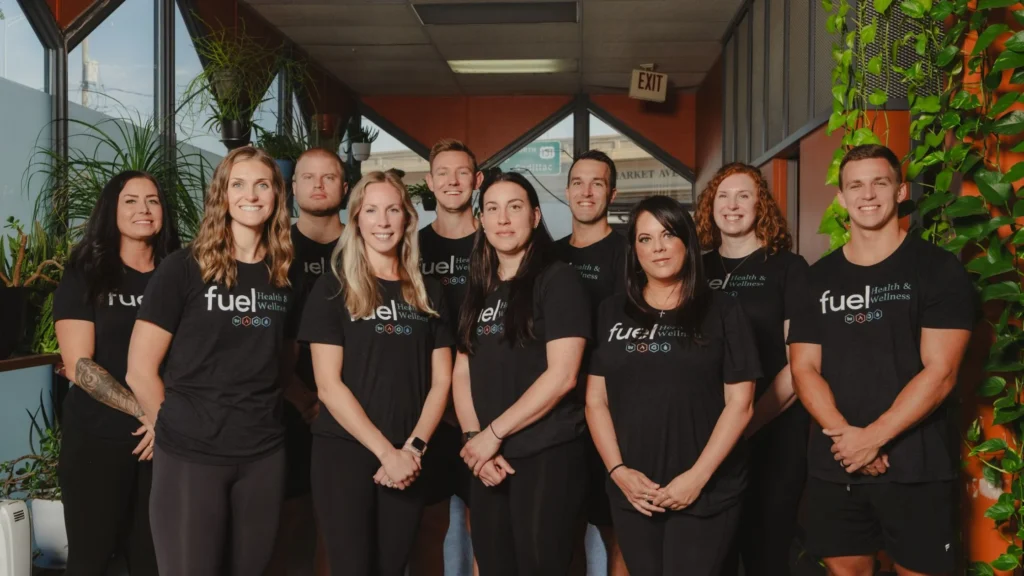
The role of physical therapists in senior care is both comprehensive and dynamic, focusing on developing personalized plans that promote recovery, independence, and long-term well-being. These experts are rigorously trained to assess physical limitations, identify pain sources, and design intervention strategies that cater specifically to the elderly population. In Grandville, physical therapists are at the forefront of innovative strategies that address both acute injuries and chronic conditions, enabling seniors to maintain a high quality of life.
Assess Individual Needs to Develop Effective Treatment Plans
The initial step in a successful physical therapy program is a comprehensive evaluation of each patient’s unique condition. Physical therapists meticulously assess factors such as joint mobility, muscle strength, balance, and overall coordination to determine the exact needs of each senior patient. This assessment typically involves a combination of physical examinations, gait analysis, and the use of diagnostic tools like range of motion measurements to gather detailed insights into the patient’s current state.
Based on these findings, therapists develop a tailored treatment plan designed to address the individual’s specific concerns. These treatment plans are dynamic and are continuously adjusted based on the patient’s progress and any new health developments. By focusing on individualized care, physical therapists not only reduce the risk of further injury but also ensure that each exercise or therapy technique is aligned with the patient’s overall goals of mobility, strength, and independence. This personalized approach is crucial in building trust and encouraging long-term commitment to their rehabilitation journey.
Educate Seniors on Safe Movement and Injury Prevention
Education is a cornerstone of effective physical therapy, especially when addressing the unique challenges faced by seniors. Physical therapists take significant time to educate their patients on proper body mechanics and movement patterns to ensure that exercises are performed correctly and safely. This education extends to demonstrating techniques for lifting, bending, and even transferring from one position to another, all of which are essential in preventing further injuries.
By empowering seniors with knowledge, therapists equip them with the tools needed to manage their condition independently. Education sessions may also cover topics such as the correct posture while sitting or standing, proper use of mobility aids, and strategies for recognizing early signs of potential injury.
An informed patient is more likely to adhere to their treatment plan, make safer choices in daily life, and ultimately experience better recovery outcomes. For those preparing for their initial appointment, What to Expect During Your First Physical Therapy Session in Grandville offers essential guidance on how therapists structure education and rehabilitation to foster long-term success.
This proactive engagement not only accelerates rehabilitation but also builds a foundation for life-long healthy habits.
Monitor Progress and Adjust Therapy Programs Accordingly
Regular progress monitoring is essential in ensuring that physical therapy remains effective over time. Physical therapists often schedule frequent follow-up assessments to evaluate improvements in strength, balance, and overall mobility. These assessments help to determine whether a patient is meeting established short-term and long-term goals. Tools such as performance tracking charts, balance assessments, and functional mobility tests are commonly used to provide quantitative feedback on progress.
When progress is slower than expected or if new issues arise, the therapy programs are promptly adjusted to suit the evolving needs of the patient. This flexibility is critical in ensuring that seniors do not plateau in their recovery, and it provides an opportunity to introduce new exercises or modify existing routines to further enhance their physical capabilities. Constant monitoring and adjustment are also important for preventing setbacks that could lead to further complications. The proactive approach taken by physical therapists in Grandville creates a supportive environment that motivates seniors to remain engaged in their rehabilitation process, leading to sustained long-term benefits.
Collaborate With Healthcare Providers for Comprehensive Care
Effective senior care in physical therapy is not achieved in isolation; it relies heavily on the collaboration between physical therapists and other healthcare providers. By working closely with physicians, occupational therapists, and nutritionists, physical therapists in Grandville ensure that every aspect of a senior’s health is addressed. This multidisciplinary approach facilitates a well-rounded treatment plan that considers all variables, from medication management to nutritional support, thus optimizing recovery outcomes.
Such collaboration may involve regular meetings or shared care plans that keep all professionals informed of a patient’s progress. This integrated approach helps identify potential issues early, such as interactions between medication and exercise or signs of secondary conditions that might require specialized intervention. Ultimately, collaboration builds a robust support network around the patient, paving the way for a smoother recovery and better overall health. Seniors benefit enormously from this comprehensive care model, as it allows them to receive consistent and coordinated support across various dimensions of their health.
Inspire Motivation and Support Throughout the Recovery Journey
A critical yet often understated role of physical therapists is to provide motivational support throughout the recovery journey. Seniors may face periods of frustration or discouragement, especially when dealing with long-term conditions. Physical therapists serve not only as technical experts but also as motivational coaches who celebrate small victories and help maintain a positive outlook. Through consistent encouragement and personalized goal setting, therapists ensure that patients remain motivated and confident about their progress.
Supportive interaction includes regular check-ins, progress updates, and adapting the exercise regimen to align with the individual’s achievements and capabilities. This emotional support is vital, as it often translates into higher adherence rates to therapy protocols and a more optimistic overall recovery experience. In a collaborative environment enriched by positive reinforcement, seniors feel empowered to tackle their physical challenges head-on, which in turn promotes improved physical outcomes and lasting independence.
Find the Right Physical Therapy Facility in Grandville
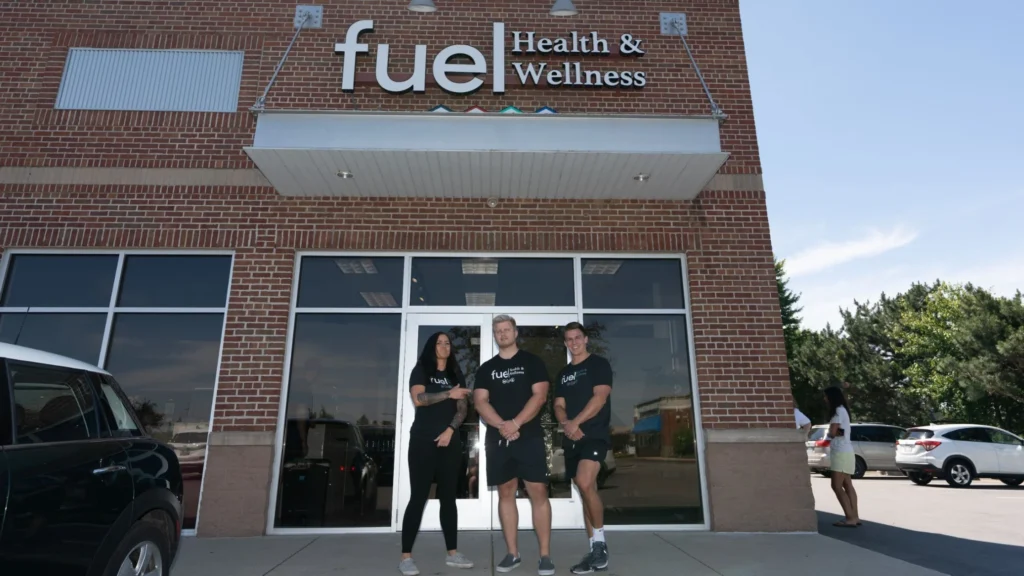
Choosing the right physical therapy facility is a critical step in ensuring successful rehabilitation and sustained improvements in health and independence for seniors. In Grandville, numerous clinics specialize in senior care, each offering a unique combination of personalized therapy, modern facilities, and experienced professionals. Seniors and their families must consider various factors to select a facility that aligns with their specific needs, preferences, and health requirements. The right environment not only enhances the effectiveness of physical therapy programs but also provides the safety, comfort, and support necessary for a successful recovery journey.
Research Local Clinics Specializing in Senior Rehabilitation
One of the first steps in selecting the ideal facility is to conduct thorough research on local clinics that specialize in senior rehabilitation. Facilities that cater specifically to older adults often have specialized equipment and therapy programs designed to address age-related issues such as decreased mobility, balance problems, and chronic pain. It is advisable to review online resources, ask for referrals from family doctors, and check for clinics with high ratings and positive patient testimonials. Clinics that emphasize a personalized approach to therapy and invest in the latest rehabilitation technology are likely to offer an environment conducive to faster recovery and enhanced quality of life. This research step is crucial in ensuring that the chosen facility has a proven track record in successfully treating elderly patients.
Consider Credentials and Experience of Physical Therapists
The qualifications and experience of the physical therapists play a pivotal role in determining the quality of care. Look for clinics that employ licensed therapists with specialized training in geriatrics and a focus on senior care. Experienced therapists are well-equipped to handle complicated cases that often arise in an aging population, such as post-surgical rehabilitation or managing symptoms of chronic diseases like arthritis or Parkinson’s disease. Certifications, continuing education, and affiliations with recognized professional organizations can provide additional assurances about the expertise of the staff. Clinics that showcase testimonials detailing successful treatment outcomes are often a strong indicator of quality, making it easier for seniors to feel confident and secure in their choice.
Evaluate Facility Amenities for Comfort and Accessibility
Comfort and accessibility are essential factors when choosing a physical therapy facility. The facility should be senior-friendly, featuring wide hallways, non-slip flooring, ramps, and well-equipped treatment rooms that can comfortably accommodate mobility aids such as wheelchairs or walkers. An environment that is both aesthetically pleasing and functionally designed to cater to seniors can positively influence the overall therapy experience. Features such as communal waiting areas, clean and modern treatment spaces, and the availability of specialized equipment for balance and strength exercises are key indicators of a quality facility. Accessibility also extends to the location of the clinic in relation to public transportation, ease of parking, and minimal barriers to entry.
Read Reviews and Testimonials From Other Patients
Patient feedback is a valuable resource for assessing the effectiveness and reliability of a physical therapy facility. Reading reviews and testimonials from seniors who have undergone therapy at a particular clinic can provide insight into the level of care, the therapist’s empathy, treatment outcomes, and the overall experience. Online platforms, healthcare review sites, and word-of-mouth recommendations are excellent sources for unbiased opinions. Reviews that mention improvements in mobility, reduced pain, and the achievement of personal rehabilitation milestones offer strong validation of a facility’s performance. Positive testimonials help build trust and assist in selecting the facility that best suits the individual needs of the senior.
Schedule Tours to Get a Feel for the Environment
Before making a final decision, it is highly recommended to schedule a tour of the facility. Visiting in person allows seniors and their families to get a firsthand look at the clinic’s setup, meet the staff, and ask specific questions about the treatment plans and equipment. Tours can reveal important aspects that online research might miss, such as the cleanliness of the facility, the friendliness of the staff, and the overall ambiance of the clinic. An in-person visit provides an opportunity to evaluate the physical environment and to determine if it aligns with the patient’s comfort and safety expectations.
Ask About Insurance Coverage and Payment Options
Finally, understanding the financial aspects of physical therapy is crucial. Seniors should inquire about accepted insurance plans, payment options, and any out-of-pocket expenses involved in the therapy process. Many facilities in Grandville offer flexible financing or payment plans to help manage costs. Transparency regarding the cost structure and insurance compatibility ensures that patients can access the necessary treatment without unexpected financial burdens, allowing them to focus entirely on their recovery. Clear communication on this front is imperative for long-term satisfaction and adherence to therapy.
Track Progress and Set Achievable Goals in Therapy
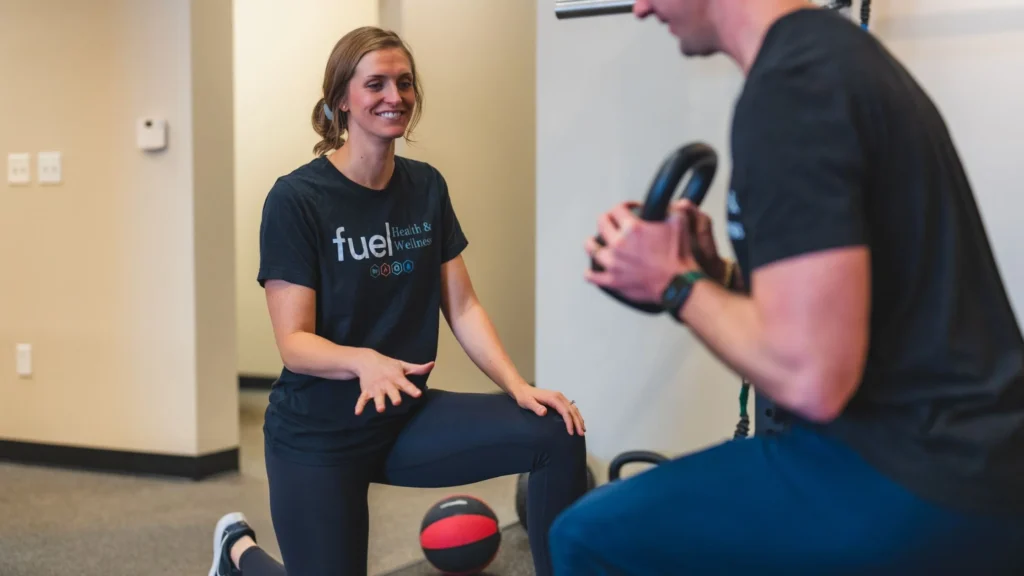
Tracking progress is an indispensable part of any physical therapy program, particularly for seniors who rely on measurable improvements to stay motivated. Regular monitoring of recovery helps both therapists and patients identify what strategies are working, which areas need adjustment, and how to set realistic, achievable training objectives. In Grandville, physical therapy facilities incorporate various methods to track progress—ranging from clinical tests to digital measurement tools—which together form an integral component of a personalized recovery plan.
Establish Short-Term and Long-Term Recovery Objectives
Setting clear, realistic recovery goals is fundamental for a successful physical therapy program. Therapists work with seniors to outline both short-term and long-term goals that are tailored to the individual’s specific needs, such as improving gait, reducing pain, or enhancing balance. Short-term goals may include achievements like increasing daily walking distance by a certain percentage or improving a specific range of motion. Long-term objectives are often related to achieving overall independence in daily activities and reducing the risk of falls. By defining these goals at the outset, both the patient and therapist have concrete benchmarks to work towards, providing a clear path to recovery and a source of ongoing motivation.
Document Improvements in Mobility and Strength
Documenting progress is critical in understanding the effectiveness of a therapy regimen. This documentation can include periodic assessments, such as measuring improvements in range of motion, strength tests using resistance tools, and even video analyses of gait. Many clinics in Grandville employ digital tracking tools that provide detailed reports on various aspects of recovery, from balance improvements to increased endurance. Such objective data not only provides evidence of progress but also helps in fine-tuning the therapy plan to ensure continuous improvement. Regularly updating progress charts offers a visual reminder of milestones reached, which in turn boosts motivation and reinforces the importance of staying committed to the rehabilitation process.
Adjust Goals as Progress Is Made Over Time
Therapy is an evolving process, and it is essential to adjust goals based on the patient’s progress over time. As seniors gain strength, improve flexibility, and become more confident in their movement, therapists update the recovery objectives to ensure they remain challenging and relevant. This adaptive approach prevents stagnation and allows the therapy plan to continuously align with the patient’s current abilities and needs. Adjustments might include introducing new exercises, increasing resistance in strength training, or intensifying balance activities. Fine-tuning the goals ensures that the recovery process remains dynamic and that patients consistently see tangible improvements, further enhancing their resolve to pursue full independence.
Celebrate Milestones to Stay Motivated in Therapy
Recognizing and celebrating small victories along the rehabilitation journey are crucial for maintaining motivation among seniors. Whether it is the ability to walk a longer distance without pain or the successful completion of a set of exercises, these milestones serve as reminders of progress and achievement. Acknowledging these achievements can be done through informal praise from the therapist, tracking improvements in a shared document, or even through small rewards. Celebrating milestones not only reinforces positive behavior but also instills a sense of achievement, which can translate into improved mental well-being and a stronger desire to continue with therapy sessions.
Involve Family Members for Additional Support
The role of family support cannot be overstated in the journey toward improved physical health. Involving family members in therapy sessions, progress reviews, and goal-setting discussions can significantly uplift the patient’s morale. When family members understand the recovery process and participate in it—even in small ways they can encourage adherence to home exercise programs—they help create a robust support system. Family involvement often results in a more holistic recovery experience, as loved ones can also help monitor progress, provide emotional support during setbacks, and celebrate successes together. This collaborative approach ensures that the patient is not facing the challenges of rehabilitation alone.
Use Tools and Resources to Measure Achievements
Modern physical therapy is increasingly supported by technology that allows for precise measurement of progress. From wearable devices that monitor activity levels and heart rate to specialized software that tracks improvements in balance and strength, these tools offer a high degree of accuracy in gauging a patient’s progress. The integration of such technologies ensures that therapy is data-driven and that any adjustments to the treatment plan are based on objective, measurable outcomes. Utilizing these resources not only provides reassurance but also sets the stage for a more systematic and effective approach to recovery, enabling seniors in Grandville to celebrate their achievements and refine their therapeutic goals continually.
Embrace Ongoing Maintenance for Long-Term Well-Being
Long-term wellness for seniors hinges not only on the initial phases of recovery but also on sustained maintenance and regular follow-up care. As individuals age, it becomes increasingly important to adopt a proactive approach to health management that extends beyond formal physical therapy sessions. Ongoing maintenance programs, which include home exercise routines, regular check-ups, and community engagement, are vital for preserving improvements in mobility, strength, and overall health. In Grandville, many healthcare facilities advocate for this extended approach, ensuring that seniors continue to receive support and supervision long after their initial rehabilitation goals have been met.
Create a Home Exercise Program for Continued Improvement
A well-designed home exercise program is crucial for ensuring that benefits gained during physical therapy are maintained over the long term. Physical therapists can develop personalized home routines that reinforce mobility, strength, and balance gains. These routines may include a combination of stretching, resistance exercises, and balance drills, all of which can be performed safely at home. The advantages of a home exercise program are twofold: it keeps the muscles active and prevents deconditioning, while also fostering a sense of self-reliance and confidence in managing one’s health independently. Many seniors find that structured home programs contribute significantly to their overall recovery, reducing the risk of future injuries by ensuring continuous application of learned techniques.
Attend Regular Check-Ups to Prevent Re-Injury
Regular follow-up appointments with physical therapists help ensure that any emerging issues are detected and addressed promptly. Continued assessments allow for the early detection of any regression in muscle strength, joint function, or balance. During these check-ups, therapists may also update the home exercise program based on observed progress or new challenges. Frequent monitoring is key to preventing minor setbacks from developing into more serious injuries, and it instills a disciplined approach to long-term well-being. This proactive strategy not only safeguards physical health but also reassures seniors that their recovery is on track, maintaining an ongoing dialogue between the patient and their care provider.
Stay Informed About New Therapy Techniques and Research
The field of physical therapy is continuously evolving, with new techniques and research emerging regularly. Seniors, as well as their caregivers, benefit from staying informed about these advancements, which can offer new opportunities to enhance rehabilitation outcomes. Whether it is breakthroughs in manual therapy, innovative strength training methods, or advances in aquatic therapy, being up-to-date with the latest research empowers patients to make informed decisions regarding their treatment options. Many facilities in Grandville offer workshops and seminars on new therapy modalities, ensuring that patients have access to state-of-the-art information and practices that can further support their long-term recovery goals.
Engage in Community Activities for Social Interaction
Social engagement plays a vital role in maintaining overall health and well-being, and it is particularly important for seniors who may deal with isolation or loneliness. Community activities such as group exercise classes, walking clubs, and wellness workshops not only provide physical benefits but also offer emotional and mental stimulation. Participating in community events helps seniors build a network of support that extends beyond their immediate family and clinical care, reinforcing the positive outcomes of physical therapy. Interaction with peers in similar situations can boost morale and provide extra motivation to adhere to home exercise routines, ultimately fostering a more sustainable approach to long-term independence.
Encourage Family Support to Maintain Healthy Habits
The involvement of family members in the long-term health regime of seniors significantly impacts compliance and motivation. When family members actively support and participate in regular check-ups, home exercise sessions, and even community activities, it creates an environment rich in encouragement and accountability. This support system is essential for maintaining momentum and ensuring that healthy habits become a permanent fixture in the patient’s lifestyle. By integrating family support into the wellness plan, seniors are more likely to experience a sustained improvement in quality of life and remain proactive in their healthcare management.
Foster a Positive Attitude Toward Physical Activity
Psychological well-being and a positive outlook on physical activity are crucial for long-term success in maintaining the gains achieved through physical therapy. Seniors who view exercise as a positive, manageable, and essential part of life tend to experience better overall outcomes. Physical therapists and care providers can foster this positive attitude by emphasizing the benefits of regular physical activity, sharing success stories, and setting incremental, achievable milestones. This mindset shift not only improves adherence to physical therapy routines but also supports a comprehensive, healthy lifestyle that extends far beyond the clinical setting.
Final Thoughts
Physical therapy has proven to be an indispensable asset for seniors in Grandville seeking to restore independence and improve overall well-being. By addressing mobility, pain, strength, and balance through personalized care, seniors are empowered to overcome physical limitations and confidently manage daily activities. At Fuel Health Wellness, we specialize in tailored physical therapy programs designed to enhance mobility, prevent falls, and support long-term wellness for aging individuals. Collaborative care, continuous progress tracking, and a focus on long-term maintenance form the backbone of effective rehabilitation. With the right facility, supportive family involvement, and ongoing education, seniors can maintain their enhanced physical capabilities and continue enjoying a robust, active lifestyle.
Frequently Asked Questions
How does physical therapy improve mobility for seniors?
Physical therapy improves mobility by incorporating targeted exercises that enhance range of motion, strength, and balance. These exercises help reduce joint stiffness and pain, ultimately enabling seniors to move more freely and perform daily activities with greater ease.
Can physical therapy help reduce the risk of falls in older adults?
Yes, physical therapy includes balance training and gait exercises specifically designed to strengthen core muscles and improve coordination, which plays a key role in fall prevention and reducing the risk of injuries related to falls.
What types of exercises are included in a typical senior physical therapy program?
A typical program includes range of motion exercises, strength training, balance and gait training, as well as manual therapies. These exercises are customized to each individual’s needs to ensure they address specific limitations and improve overall functionality.
How often should seniors attend physical therapy sessions to see improvements?
Seniors typically benefit from attending physical therapy sessions two to three times per week. This frequency, combined with a home exercise program, supports gradual and sustainable improvements in strength, balance, and mobility over time.
What role does family support play in the success of physical therapy for seniors?
Family support is crucial as it enhances motivation and adherence to the therapy program. Involving family members in therapy sessions and home exercises provides emotional support, accountability, and encouragement, all of which contribute to a more effective and lasting recovery.
